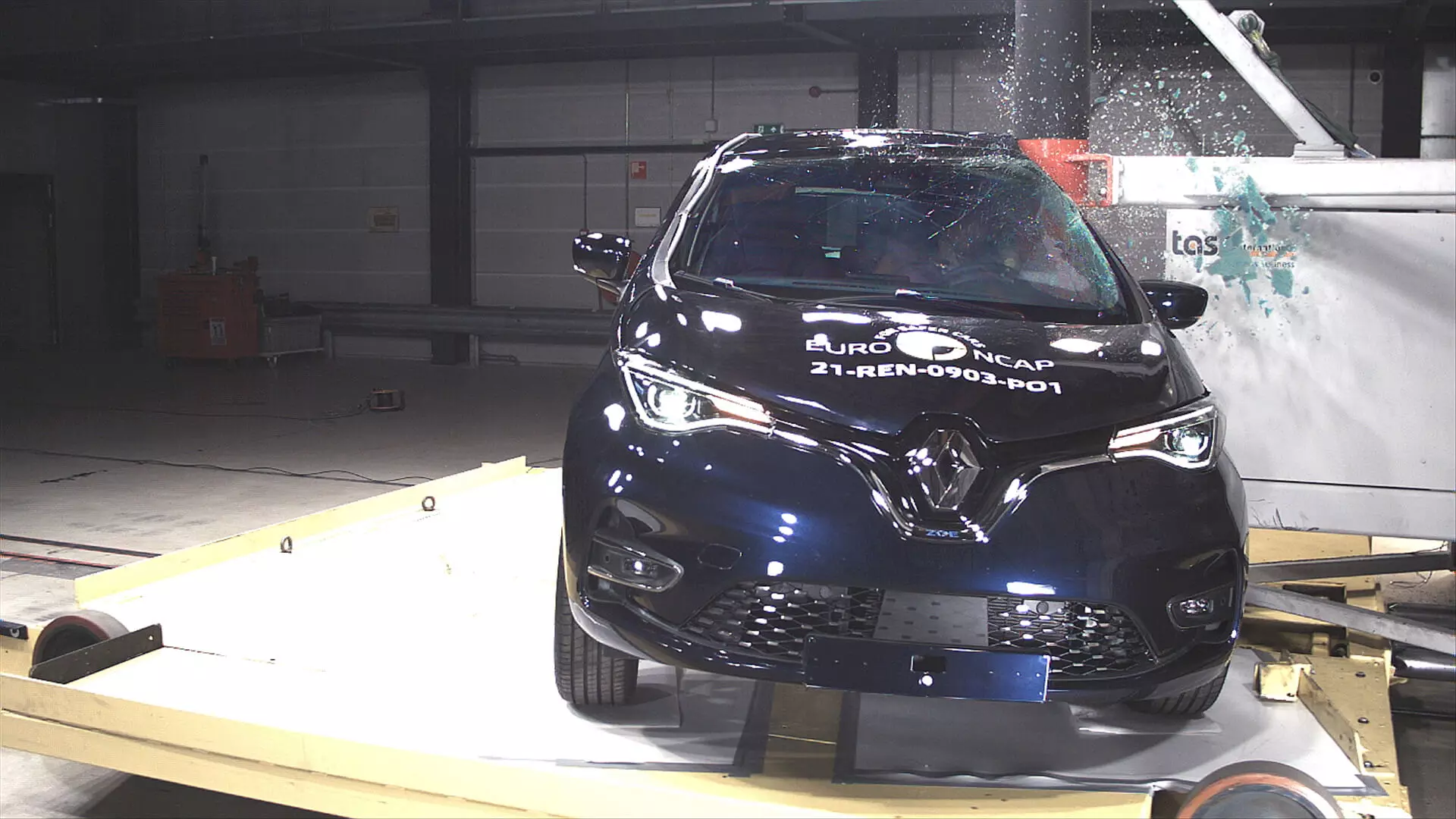When the Renault Zoe was tested by Euro NCAP for the first time in 2013 it got five stars. New evaluation eight years later and the final result is… zero stars, becoming the third model ever tested by the organism to have this classification.
It joins Fiat Punto and Fiat Panda, which also started out with, respectively, five stars (in 2005) and four stars (in 2011) at the beginning of their careers, but ended up with zero stars when they were retested in 2017 and 2018.
What do these three models have in common? Its long stay on the market.

The Renault Zoe was launched in 2012 and is about to celebrate its 10th anniversary on the market, without ever having received substantial modifications (whether structurally or in terms of safety equipment). In 2020, it received its biggest update — justifying the new test by Euro NCAP — in which it gained a larger capacity battery and a more powerful engine. But in the chapter of passive and active safety there was, however, nothing new.
In the same period of time we have seen Euro NCAP review their testing protocols five times.
Revisions that resulted in more demanding crash tests and where active safety (the ability to avoid accidents) became much more prominent, meeting the evolution registered at the level of driving assistants (for example, autonomous braking of emergency).
It's no wonder, therefore, that performance across the various tests has regressed substantially. Euro NCAP also notes that in the 2020 update, the Renault Zoe received a new front seat-mounted side airbag that protects the occupants' chest, but before the update the side airbag protected both the chest and the head — “(…) a degradation in occupant protection,” reads the Euro NCAP communiqué.
In the four assessment areas the Renault Zoe obtained low crash test scores and has important gaps in terms of active safety equipment, thus disqualifying it from achieving any star.
Dacia Spring: a star
The bad news is not over for the Renault Group. The Dacia Spring, the cheapest tram on the market, only got one star. Despite being a new model in Europe, the Dacia electric has as its starting point the Renault City K-ZE sold and produced in China, which in turn derives from the combustion Renault Kwid, launched in 2015 and sold in South America and India.Dacia Spring's poor results in the Euro NCAP review mirror those of the Kwid a few years ago when it was tested by Global NCAP, with Euro NCAP referring to Spring's performance in crash tests as “problematic”, given the poor protection in crash tests of the driver's chest and rear passenger's head.
The poor supply of active safety equipment sealed the result of the little Spring, getting only one star.
Rikard Fredriksson, vehicle safety advisor at Trafikverket"The Euro NCAP tests highlight the significant differences that arise when the decision is made not to improve the safety level of a vehicle that remains in production."
And the others?
The Renault Zoe and Dacia Spring weren't the only electrics to be tested by Euro NCAP.
The new generation of the Fiat 500 is just and only electric, and has achieved a convincing four stars, with some lesser results in crash tests (driver and passenger chest), in pedestrian protection tests and in the performance of the autonomous braking system from vehicle to vehicle.
Four stars was also the rating achieved by the all-electric Chinese compact SUV, the MG Marvel R. The much larger BMW iX and Mercedes-Benz EQS, also just electric, achieved the coveted five stars, with high ratings in all evaluation areas .
Leaving the trams, it is also worth noting the excellent result achieved by the new Nissan Qashqai — also a «son» of the Renault-Nissan-Mitsubishi Alliance — with five stars, which reflect the high ratings achieved in all evaluation areas.
Five stars were also achieved by the Volkswagen Group's proposals, the new Skoda Fabia and the Volkswagen Caddy commercial. The G70 and GV70 (SUV) were also tested, the two new models from Genesis, the Hyundai Motor Group's premium brand that has not yet arrived in Portugal, but is already sold in some European markets, with both also achieving five stars.
Finally, Euro NCAP attributed results to new hybrid and electric variants of models tested in previous years: Audi A6 TFSIe (plug-in hybrid), Range Rover Evoque P300 (plug-in hybrid), Mazda2 Hybrid (hybrid, gets the same Toyota Yaris rating), Mercedes-Benz EQB (electric, GLB rating) and Nissan Townstar (electric, Renault Kangoo rating).
